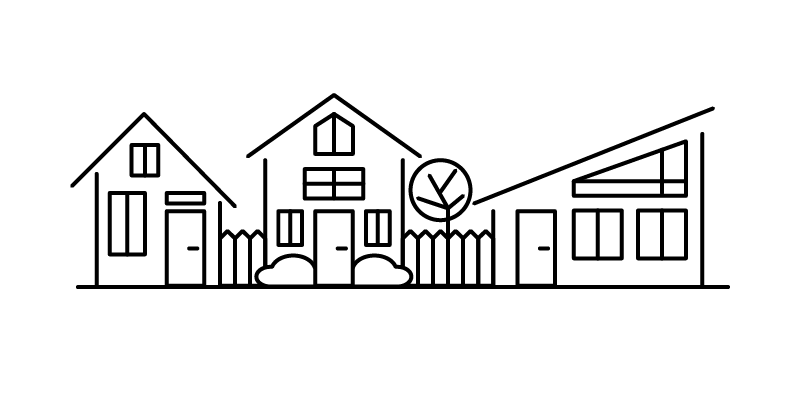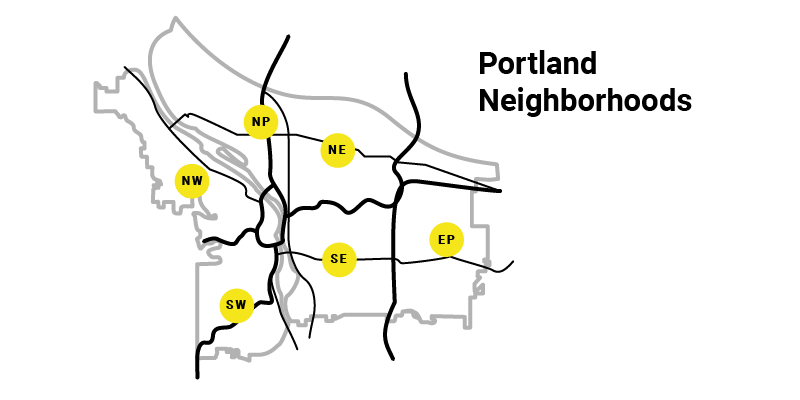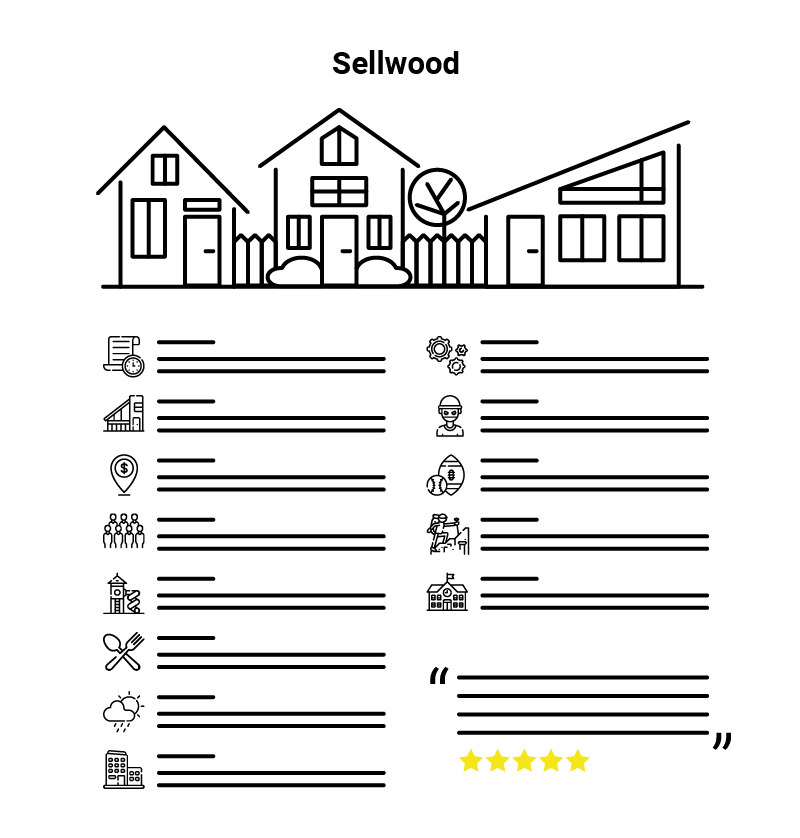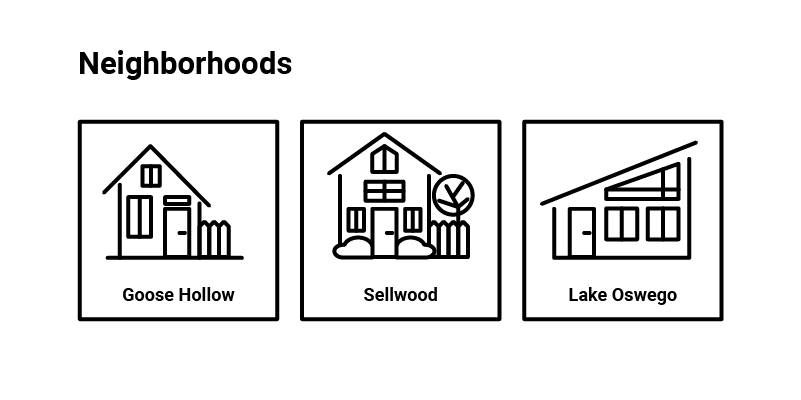Real estate agents looking to drive traffic to their website in order to generate leads are faced with a hefty challenge. Larger syndication sites like Zillow all but monopolize the search engines making it difficult to get in front of your target demographic. However, with the proper real estate marketing strategy in place, there is a way to outshine those larger sites. The answer: Hyper local-focused neighborhood pages. After all, Zillow doesn’t know your neighborhood like you do.

Every real estate agent should have pages on their website that display homes for sale in the markets they are trying to target. These are commonly referred to as neighborhood pages. However, in order to enhance your reach over larger syndication websites, it will take more than just creating pages. A successful real estate marketing strategy will include pages for every single county, city, school district, and neighborhood that falls in your desired target audience, supplemented by specific features that you know your audience is looking for.
Are you a Real Estate Agent looking for help with your Digital Marketing?
With both the digital marketing expertise and experience in the real estate industry, we can help build your firm or agency. Ready to grow?
Click Here to See How we can Help Grow Your Real Estate Business
Creating Neighborhood Pages
The actual creation of the page is relatively easy. If you are using WordPress, Squarespace, or any other website builder, you can simply add a new page (not just a new post, but an actual page.) Creating actual neighborhood pages is essential in that they become a fixed part of your website’s primary structure and navigation. We want pages that your website visitors can easily navigate and won’t get buried, as blog posts tend to do, over time.

In developing your webpage content schedule, there are a couple of different strategies that you could use.
- Familiar Neighborhoods – Usually, the most straightforward approach is, to begin with a neighborhood that you have already spent time in and know very well.
- In-Demand Neighborhoods – The second strategy is to research which neighborhoods in your target area are the most desirable or have the most listings/sales in recent months.
After you’ve chosen your strategy, the next step is to set a goal to add new neighborhood profiles to your site as often as you can, planning for a minimum of one per month until you have an excellent neighborhood page for all your prime target areas.
Which topics should you include on your neighborhood page?
As we said, nobody knows the neighborhoods you are targeting as you do. In order to make the most effective neighborhood pages, it is essential that you put yourself in the home buyer’s shoes and include features of that neighborhood that are essential in the home buyer’s purchasing decision process. This is where your website can outshine your competition, as the information you include will help your customers make an informed decision about whether or not your listings are what they are looking for.

Here is a list of ideas that should make it easier for you:
- Neighborhood history
- Popular house types/styles
- Average real estate prices (compared to the national average real estate prices)
- Population
- Parks
- Restaurants
- Weather
- Best employers
- Local Industry
- Crime (Link to Crime reports for updated information)
- Sports
- Hiking trails (hiking and cycling)
- Testimonials (interviewing people living in the neighborhood)
- Schools and universities (link to Great Schools for classes and local schools and Colleges websites)
Resource Sites for Collecting Valuable Neighborhood Insights
Below are a few research sites for collecting information that you can use on your neighborhood pages. We recommend rewriting any content using your own words and style any content that you find on these websites. You will receive better search engine ranking for unique content vs. copy and paste.
For example, if you’re researching the “Laurelhurst” neighborhood in Portland, Oregon, you might utilize the following websites:
- https://www.greatschools.org/
- https://en.wikipedia.org/wiki/Laurelhurst,_Portland,_Oregon
- https://www.niche.com/places-to-live/n/laurelhurst-portland-or
- https://portlandneighborhood.com/portland-neighborhoods
- https://www.realtor.com/realestateandhomes-search/Laurelhurst_Portland_OR (very bottom of the page will have a brief neighborhood description, plus other “hot” neighborhoods.)
Highlight Your Property Listings
Information alone isn’t enough to ease weary homebuyer’s concerns. Supplementing the hyper-local focused information with high-quality photos and videos of the neighborhood will only enhance the user experience.
Photos and videos are essential for each neighborhood profile. As the old saying goes, a picture is worth a thousand words. People will “experience” the neighborhood much more vividly with well-selected photos than with long-word descriptions. Are there certain attractions, local events in the neighborhood, or parks close by that you can include? The best approach is to take photos yourself. Any of your more recent smartphones will be fine. It may not look polished, but that’s an advantage because it shows your visitors that you provide them with original content.
Linking Your Neighborhood Pages
As you create multiple pages (and we recommend that you do), you should link them throughout your website. Once your visitors have seen one neighborhood, they will usually want to see more, especially when easily accessible and displayed prominently.

At the end of your page, invite the website visitor to explore your other pages and give them an incentive by highlighting one significant benefit of the next neighborhood (i.e., great schools or exceptional parks). We recommend adding additional neighborhoods in either a sidebar or right above your footer area to entice users to explore other parts of your website that might interest them.
Remember to Update Your Profile Pages Regularly
You do not want your neighborhood pages to start to feel outdated. Neighborhoods are dynamic and continuously changing. There will be restaurants opening and closing, and employers come to the city, the population numbers will change, etc. Your profile page should remain a trusted resource for buyers.
SEO Best Practices for Your Real Estate Neighborhood Page
- Target long-tail keywords for your neighborhood page. Long-tail keywords are search phrases that contain three or more words (such as the specific “Laurelhurst Bungalows for Sale” vs. generic “Portland Homes”).
- Choose keyword phrases that your target audience is most likely to use in their search queries. Include zip codes that searchers often use.
- Use the neighborhood’s name in the title of the page, the meta description, and organically within the text’s body.
- Choose a URL structure that displays your page’s neighborhood in the title (ex. “https://examplerealestate.com/laurelhurst”).
- Include your targeted keywords in the file names of your page’s images and alt tags.
- Only use your keywords in a way that sounds natural. Keep the keyword density between 1-3%. That translates to using a keyword phrase 1-3 times per 100 words on the page.
- Make sure that your website loads fast. Slow-loading websites receive search engine demerits and usually don’t rank as well as faster loading websites. Here are a couple of tools to test your web pages:
- Ensure that your webpage looks good on mobile devices. It is estimated that more than half of all website traffic comes from mobile devices, such as smartphones.
Looking for Help with Your Neighborhood Pages?
Our team has the digital marketing expertise and experience in the real estate industry to help you design, build, optimize, and drive targeted traffic to your neighborhood landing pages. Ready to grow?
Click Here to See How we can Help Grow Your Real Estate Business
